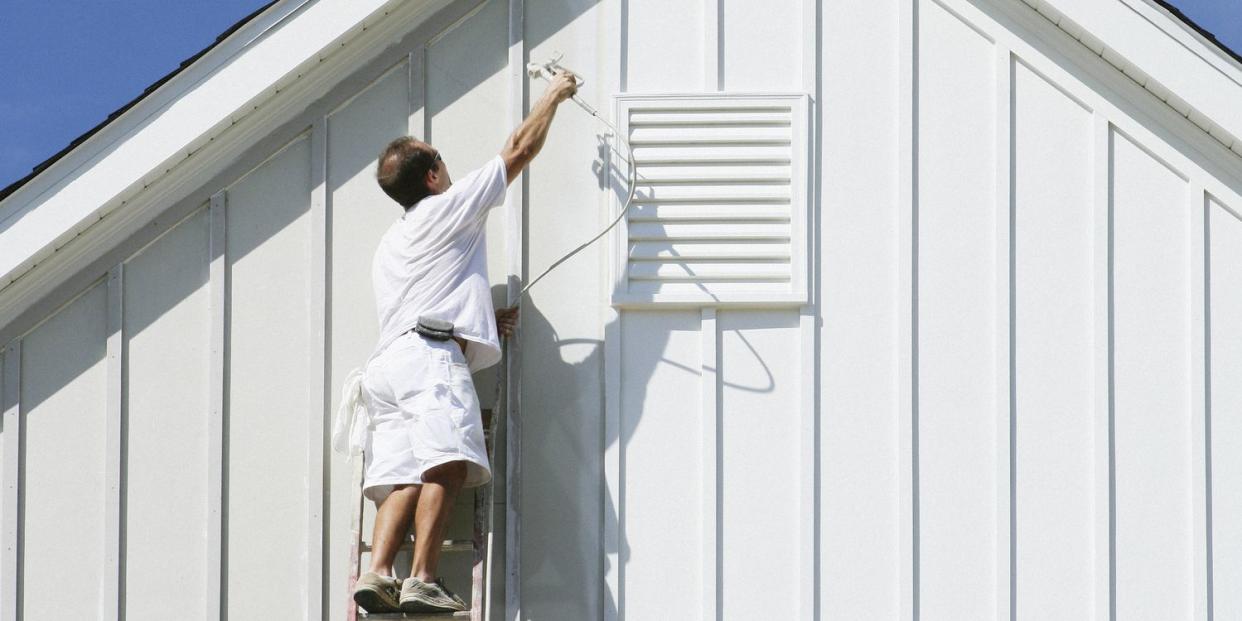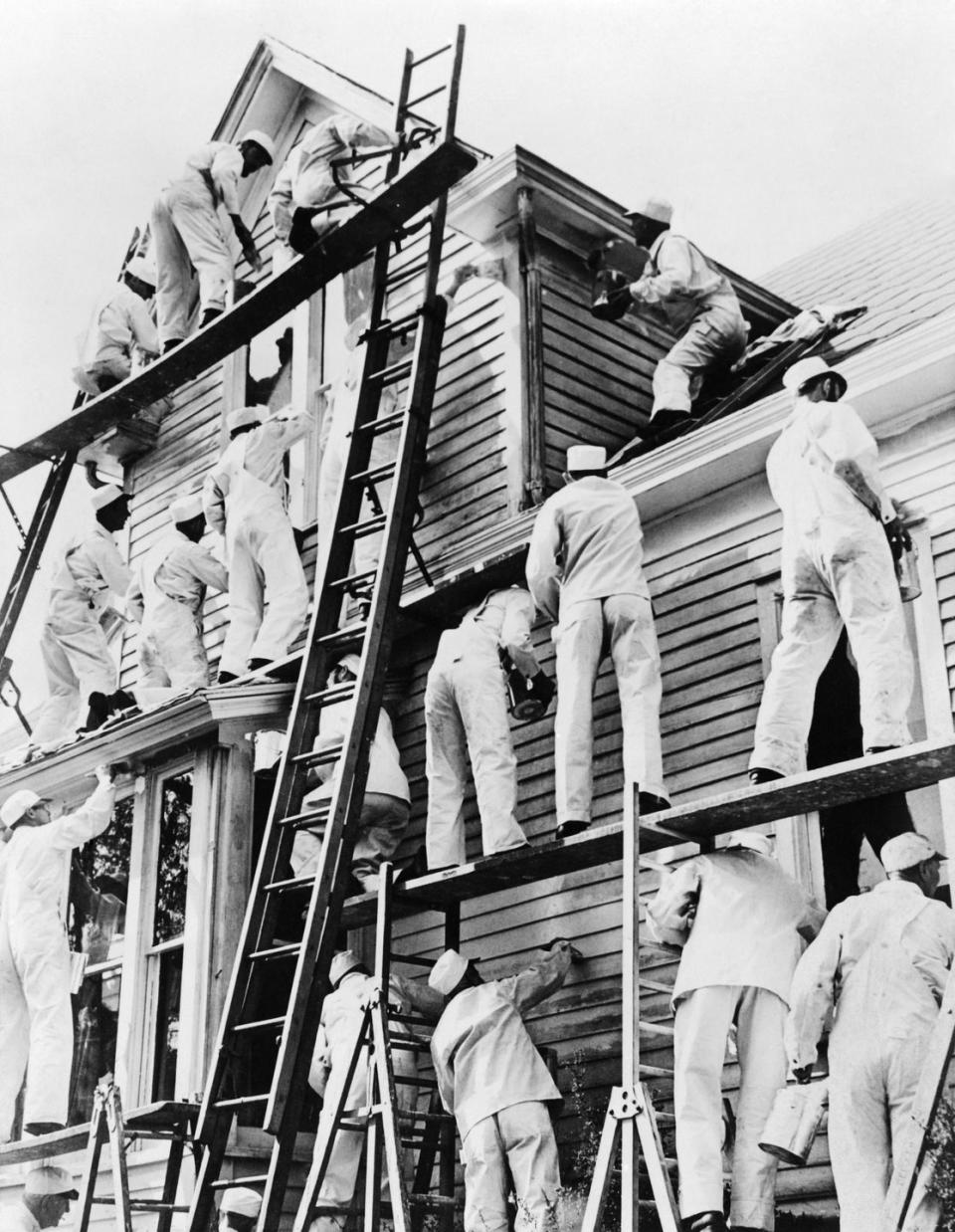Experts Reveal Why Painters Always Wear White, and Everything Makes Sense Now

Ever wonder why professional painters are almost always dressed in head-to-toe white? You're not alone. "It's one of the most commonly asked questions in the paint industry," says Craig Bunting, director of professional segment at Benjamin Moore.
While there's no one definitive answer, Bunting explains, "The general consensus is that painters began wearing whites because the vast majority of the materials they use are white-not just paint, but many of the preparation materials too, such as spackle, plaster, and caulk." (It is worth noting that nearly half of Benjamin Moore's 100 most popular colors are, in fact, white.) "Invariably, these materials find their way onto even the most meticulous painter’s clothing, so the white backdrop provides the best chance to hide drips and splatter."

There's also historic precedent, Bunting notes. "White was considered a 'uniform' for some European labor unions in the 19th century, so it’s safe to say that whites have been worn in the paint industry for at least 200 years."
So there you have it: 19th-century labor unions plus caulk equals white coveralls. But what if you hire a painter and he or she isn't wearing white? Should you be concerned? "Not necessarily," says Bunting. "Even though whites are standard, there's no correlation between a painter’s skills and their chosen attire. It’s a better bet to rely on referrals, reviews, and experience when hiring a painting contractor."
('You Might Also Like',)

